A WRITER'S WIT
I formed a resolution to never write a word I did not want to write; to think only of my own tastes and ideals, without a thought of those of editors or publishers.
C. S. Forester
Born August 27, 1899
Reno, Nevada—August 3, 2014 NEXT TIME: NEW YORKER FICTION 2014
A WRITER'S WIT My Book World 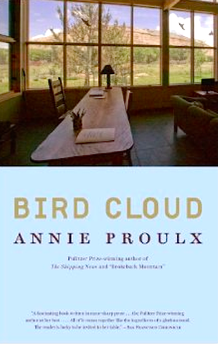 Proulx, Annie. Bird Cloud. New York: Scribner, 2011. In this memoir author Annie Proulx speaks of what it means to build a home. She begins with an almost unlikely tale in which she and her sister are delayed by a very weird merchant, so much so that they come upon a car accident they might have been a part of if it hadn’t been for the weird man who is instrumental in delaying them. When she tells her mother of the incident, her mother reveals that the man’s name was Proulx, too. Proulx has lived in many locales but seems to have taken quite a liking to the West, most assuredly New Mexico and Wyoming, where she decides to purchase land and build a place where she will live out her days: “A bald eagle perched in a dead tree, watching us. The landscape was bold. Not only was the property on the North Platte River but the river ran through it, taking an east-west turn for a few miles in its course. The land was a section, 640 acres, a square mile of riparian shrubs and cottonwood, some wetland areas during June high water, sage flats and a lot of weedy overgrazed pasture” (46). Proulx purchases the land as the site for her house, Bird Cloud. She then gives the reader a treasure trove of history concerning her patch of land. The archaeological. The environmental. “Trying to understand Wyoming’s landscape where I could see the remains of Indian trails, stone flakes from their toolmaking, the tools themselves, images scratched into the dark desert varnish of rock faces, cairns and fire pits forced recognition: where there are humans there is always ecological change” (165). The political wranglings. “White men never understood the Indian way of consensus and insisted on dealing with a tribal leader or “chief,” another concept alien to Indians who learned to greatly distrust the lying, devious white men whose treaties were worthless. On the other side, most whites regarded Indian oratory as a kind of obstructionist filibustering, boring harangues, though some admired them and saw them as akin to classical Roman oratory” (171). The two most interesting aspects of the book, to me, are following the narrative of Proulx's house’s construction, and two, the observation of bird life. It’s as if she, while telling of the building of her “nest,” recounts another story, as if she herself is just another bird attempting to make a home in the area. They seem to observe her as much as she observes them. “The first day I saw Bird Cloud, in July 2003, I was astonished by the great number and variety of birds in this river habitat. A bald eagle sat in a tree near the river’s edge. Pelicans sailed downstream. I saw swallows, falcons, bluebirds, flocks of ducks burst up the the North Platte and flew over my head in whistling flight. Ravens croaked from the cliff. I thought my great avocation for the rest of my life would be watching these birds and learning their ways” (191). Proulx does much to depict the arduous nature of living in the mountainous setting. At times strong and constant winds. Foot after foot of snow. Impassable roads. Bitterly cold temperatures day after day. “Gerald kept smashing a path through the drifts on the county road and managed to get in and out most days, taking a risk lover’s joy in the nauseating slides toward the ditch, the scrape of ice and packed snow on his truck’s undercarriage” (119). Even after the house is finished, even as Proulx remains until the last day of December before fleeing to her other home in New Mexico, she finally sees she will never be able to realize her dream of living in this environment year round. “So ended the first and only full year I was to spend at Bird Cloud. I returned in March and for several more years came in early spring and stayed until the road-choking snow drove me out, but I had to face the fact that no matter how much I loved the place it was not, and never could be, the final home of which I had dreamed” (231). Sad. And yet something to admire: her almost unstoppable desire and courage to see the building of her home through to its completion, something most of us can only dream of—making Proulx a rare bird indeed.
NEXT TIME: PHOTOS A WRITER'S WIT Messing Up Mother Nature On the same visit that Ken and I made to Yellow House Canyon several weeks ago, we saw some things that weren't so pretty. Officially, a road has been rerouted, and so has the pathway for floods, should they ever occur again. The other things not so pretty were in the form of trash that individuals feel entitled to throw in the canyon because they can't think of anywhere else to put it. Just kids with too much time and too many tires on their hands? I wonder. FRIDAY: NEW YORKER FICTION
A WRITER'S WIT Hawk in the Neighborhood Not the greatest shot in terms of photography. I had to shoot with a telephoto lens through three panes of glass. Still, this hawk is an unusual sight, and it entertained us throughout the day, as it sailed through the air above our block. FRIDAY: NEW YORKER FICTION 2014
A WRITER'S WIT Mid-November, Ken and I made the hour-and-fifteen minute drive west of Lubbock to The Muleshoe National Wildlife Refuge to see if the Sandhill cranes had yet arrived. Saw not a single one. In fact, we saw very little life at all, somewhat seasonal in nature, but also the result of a long-term drought. (Click on the refuge's Web site above to view photos of more prosperous times.) This time I sought to capture the stark nature of what water leaves behind.
GUIDE TO PHOTOGRAPHS: 1-6. White Lake. 1-2. Russet may be the "strongest" color you see these days. 3. The winds lift salts from the dry lake. 4. I love the shadows cast by these plants. 5. Even short plants can cast a shadow in the late afternoon of November. 6. The road we hike along from the lake bed back to the car. 7-34. Paul's Lake, which can be reached by traveling Highway 214 north a short distance. 8-10. Waves of salts the water has left behind. 11-16. Debris. 17-18. Succulents with their subtle coloring. 19. Ye olde windmill still chugging away. 20-23. Muted colors, stark. 22-23. Little difference between the color and sepia versions of the same shot. 24. Observation deck and modern-day out house. 25-27. Short prairie grasses, which the refuge Web site states have been undisrupted by a plow. 28. Salt bed. 29-30. Paul's Lake, haunting scenes. 31. Raptor is but a dot, seeking something to eat. 32. Bull Lake seen from the highway back to Lubbock. Also dry. 33-34. Bare branches/blue skies. A POEM ON THURSDAY 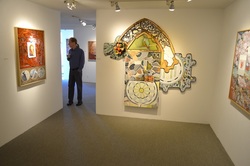 Dixon Minutes Before Exhibition Opens Dixon Minutes Before Exhibition Opens My partner Ken Dixon recently produced an exhibition, which opened at William Campbell Contemporary Art Gallery in Fort Worth, Texas on October 19 and will remain through November 16. Titled 3 Short Stories & 12 Options, the collection is comprised of "fifteen large-scale, mixed media pieces completed over the past year and inspired by Dixon's decades-long fascination with the Texas Hill Country and northeastern United States. A visual convergence of art, science, and culture, the collection explores themes of order and disorder on both macro and micro levels within the environment. Additionally, Dixon addresses the role of technology in art and nature as he intermingles digital imaging with painting and collage." Needless to say, I couldn't be happier for his continued success. Please click on the link to Campbell's gallery to find out more. I've also placed a link to the gallery in my sidebar, should one need to locate it later rather than sooner. If you will be in the DFW area in the next few weeks, stop in and take a look! Below are photos from the opening festivities.  On Thursday Ken and I spent part of our 37th anniversary together at the Muleshoe Wildlife Preserve. Though two of the lakes we visited were dry, the wintering Sandhill cranes began circling overhead some time after four o'clock. As soon as you get out of the car, you can hear their characteristic call, and yet only a few seem to be standing in shallow water of one of the lakes. You train you eyes on the distance and see nothing but black dots at first. Then they begin to circle closer and closer, their undersides turning golden from the late afternoon sun. Because of their size, they do not aim quite as directly for earth as smaller birds do. They are magical and graceful creatures as they circle in for their landings, a lot like jets at an airport. By dusk the lake will be full. Below I've set up a slide show of photos of the cranes and a few scenes of the drought-ridden landscape that still manages to charm--an hour and twenty minutes from Lubbock. Items That Won't Recycle _ The Eclipse gum and Nature Valley wrappers always catch my eye on the store shelves. What is this smooth, shiny Mylar (or look-alike material) made of? Petroleum? We see the Styrofoam Sonic cups everywhere, if not perched on someone’s desk at the office, then flattened in the street or skittering across our lawn (there’s a Sonic two blocks over, so the trip isn’t a long one). The Udi Bread wrapper is the same as any bread wrapper. It’s made of plastic. It will get caught in your tree limbs; that’s why I always tie those things in a knot before putting them in the dumpster. Regardless, it will still take thousands of years to decompose. If ever. _Politics_ I wrote my three congresspersons a letter each week for six weeks, and then I missed a week. I haven’t written since. My congressional rep. wrote back three times, if belatedly, but, of course, it was all the same party line stuff. Nothing new. He probably said the same thing about my letters. I’ll write my three congresspersons again—there’s certainly plenty of fodder for letters—but for now I’m taking a break. The holidays always do that to me. Time to take a break, let the old body and mind rest up. A Dictionary Of Errors _ The following may be a matter of choice. Maybe not. Why would a sportscaster on ESPN say a quarterback is the “most steady player” instead of saying he’s the “steadiest player”? It’s a trend I’ve noted for a long time. When I taught elementary reading years ago, we conveyed (I hope) the principle that most adjectives are “regular” and that all you have to do is add “i-e-r” for comparing two and “i-e-s-t” for representing the superlative. You only add “more” or “most” to irregular adjectives, say, like “beautiful”. You wouldn’t say “beautifuler” or “beautifulest”. Of course not; your ear tells you at a fairly young age that that construction is wrong. More and more, however, I hear more and more people treating EVERY adjective as if it were irregular. They say things like “more steady” or “more breezy” instead of “steadier” or “breezier”. Can anyone explain this phenom to me? Is it because elementary readers no longer teach the difference between regular or irregular adjectives, or is there something more sinister (sinisterer?) involved? I’d love to know. Xmases Past _ Below is an excerpt from the novel I just finished, tentatively called The Operatic Scale of Desire. It is the blog post of character Dan Wallis, chaplain of a busy teaching hospital in Wichita. He writes about an incident that took place when he was fourteen and philosophizes further on the meaning of a holiday that comes around as regularly as a winter cold. Some time after reaching puberty, I intuit that there exist two Christmases. One holiday seems to begin ardently after Thanksgiving: arias you hear on the Texaco-Metropolitan Opera radio affiliate, songs you chant in the school program, songs of sentimental cheer crooned by your favorite stars on TV and the movies (‘Have Yourself A Merry Little Christmas’ makes me smile and cry). Some time between the church pageant and Christmas Eve, the season’s feverish pitch falls to a hush: by now you have exchanged gifts at school, at church; you have presented offerings to your teachers, your neighbors; in the mail you long ago placed little packages that travel to Pop’s family on the coast. You are witness to the shared anxiety in everyone’s faces, from the postman to the woman who sells tickets at the Orpheum. If you can’t find your money, Son, will you step aside so that others might enjoy the season. And when I do locate my cash, the toothy woman flashes me a practiced smile and says, Say, aren’t you the boy that played Amahl several seasons ago? No. Well, I’m sure you are, I never forget a face. Fuck you, I mumble under my breath. Her smile falls away, and she shouts through the hole in the glass. Get out of my sight, the world has no use for your kind. What kind is that? I rant, giving her the finger. I then see a reflection of myself looking like Ma when she’s hopping mad, and I jump back. You know what you are, now get out of my window so I can help these good people standing in the cold, Sonny. The other Christmas is a parallel and unequal world of ancient hymns, the story as it is told from the Big Book on the lectern at church. Long ago a virgin mother gives birth to a very special baby (I haven’t yet learned paradox), a baby that will save all the wretches of the world (especially and including me). Very wise men following a star in the sky travel a long distance to be present on this very chilly night that the baby Jesus is wrapped tightly and laid in a manger. Ma—dressed in her Christmas nightgown through which you can see her breasts—explains that for all intents and purposes Jesus was born in a barn and that his manger was little more than a cattle trough. As she holds me close to her sweet bosom, I think of my grandfather’s barn, a place that smells of dung and car grease, and wonder, That’s where our noble savior was born? The saddest thing is that one Christmas wars against the other like a jealous sibling. Yes, one is crass, the other wise. One powerful, the other weak and self-deprecating. One encourages inane consumption, the other generosity, the former eradicating one’s desire to practice the latter. It is a war I relive each year—fretting over what to get for whom and how much to spend or not—a case of post traumatic stress that multiplies and folds over itself year after year. It is a war that always ends in a truce, heathen burghers smiling smugly—even as a babe coos quietly in his manger. Current Reading _ I continue my close readings of New Yorker stories from 2011. Only two more to go until I write about the project.
What kind of statistics will be interesting? The number of male authors? Female? Number of stories about ethnic minorities? Gays/lesbians? Trannies? Average age? How many stories are set in New York or on the eastern seaboard? How many are set in the boondocks, a foreign country? Literary issues? Who uses the third person close point of view? Who writes in first person? After January first I begin my trek through these fifty or so stories to see what the magic is, the alchemy that is the New Yorker story. |
AUTHOR
Richard Jespers is a writer living in Lubbock, Texas, USA. See my profile at Author Central:
http://amazon.com/author/rjespers Archives
June 2024
Categories
All
Blogroll
Websites
|
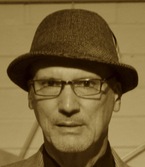
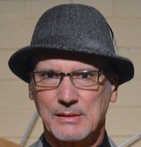
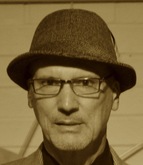
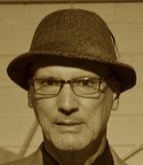
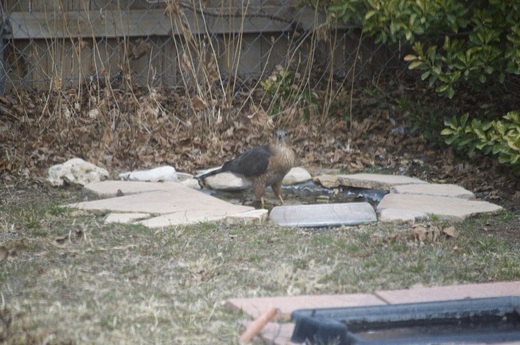

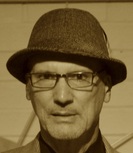
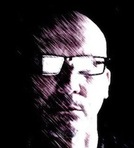



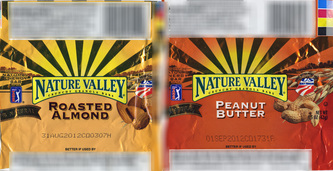



 RSS Feed
RSS Feed